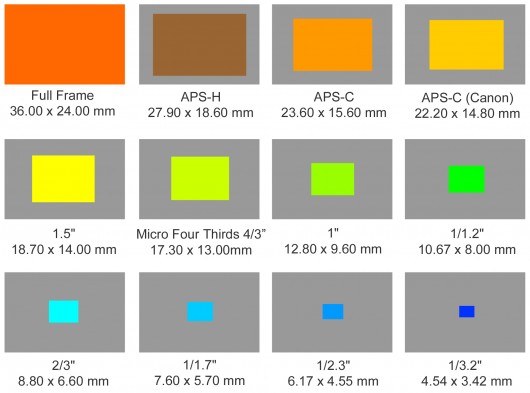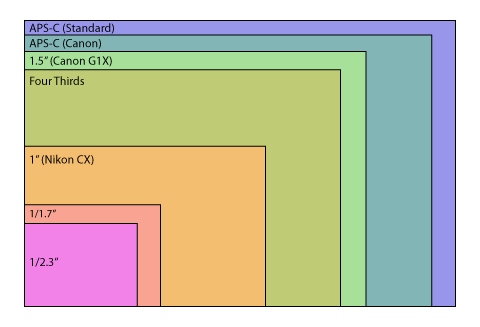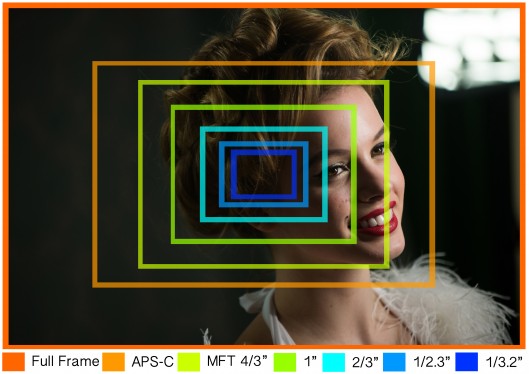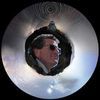Megapixels and Sensor Size
Jun 19, 2014 07:33:16 #
Jun 19, 2014 07:39:01 #
PhilWissbeck wrote:
How do they compare? What is more important?
Wow! This could go on for several pages, with opinions and corrections flying back and forth. Simple answer: larger sensor with lots of MP. If I could choose only one, I'd go for a larger sensor, since it's like working with a larger negative.
There is so much electronics going on in modern cameras, that you can't assume that one maker's 20MP will give you better pictures than another maker's 16MP.
Enjoy the discussion that will follow. :D



Jun 19, 2014 07:58:06 #
PhilWissbeck wrote:
Megapixels and sensor size. How do they compare? What is more important?
Jerry seems to have covered the sensor sizes but that has no bearing on how they do in low light or color accuracy. What's been stated before is that it's the size of each pixel (bucket size)and the bit depth of the DSP that makes more difference to a photo than the total number of pixels. The demo of cropping on a D800e today shows the advantage of having lots of pixels, but not all high pixel count systems are great for auto focus, menu ease of use or lens options.
I guess the determining factor is the type of photography you want to accomplish, your budget and how the camera feels in your hands.
Jun 19, 2014 08:07:23 #
You two have managed to cover this age old topic in a new world record! But I bet there will be others with their two cents before long...
Jun 19, 2014 08:20:38 #
Mr PC wrote:
You two have managed to cover this age old topic in a new world record! But I bet there will be others with their two cents before long...
Not yet, I have a question:
How do the sensors get their names - I am referring to the 1" (12.8x9.6mm)
1/1.2" (10.67x8.0mm)
etc.
Jun 19, 2014 08:46:46 #
singleviking wrote:
Jerry seems to have covered the sensor sizes but t... (show quote)
And it is even more complex than that. How the sensors themselves are designed has a lot to do with outcome also. I have two cameras in the same "line" from the same company, with the same size 16mp sensor in the same format (m43). Though the camera company doesn't tell us this, research reveals that the sensors in these models were made by different companies and this explains part of why they perform differently (which I can attest to from experience). One is better than the other for shooting sunrise to sunset, most interior shooting, and for moving things. The other, however, is better for night and near-dark interior shooting and has minimal noise in long exposures. So must knowing the numbers isn't enough either. It really pays to research your camera and study the testing that has been done on it before and after you get it.
Jun 19, 2014 10:01:31 #
Searcher wrote:
Not yet, I have a question:
How do the sensors get their names - I am referring to the 1" (12.8x9.6mm)
1/1.2" (10.67x8.0mm)
etc.
How do the sensors get their names - I am referring to the 1" (12.8x9.6mm)
1/1.2" (10.67x8.0mm)
etc.
Ridiculous, isn't it? Believe it or not, that goes back to the tube days of television. If all sensors used the same system of measurement, it would be much easier to compare sizes.
Jun 19, 2014 15:27:46 #
Searcher wrote:
Not yet, I have a question:
How do the sensors get their names - I am referring to the 1" (12.8x9.6mm)
1/1.2" (10.67x8.0mm)
etc.
How do the sensors get their names - I am referring to the 1" (12.8x9.6mm)
1/1.2" (10.67x8.0mm)
etc.
Mostly from their corner to corner diagonal measurments.
Jun 19, 2014 15:36:58 #
MT Shooter wrote:
Mostly from their corner to corner diagonal measurments.
The 1" (12.8x9.6mm) has a diagonal of 16mm (0.63" )
Jun 19, 2014 15:47:31 #
Searcher wrote:
The 1" (12.8x9.6mm) has a diagonal of 16mm (0.63" )
That's why I said "mostly".
The 1" is a total oddball designation. And its 13.2mm x 8.8mm with a 15.86mm diagonal in digital cameras like the Nikon 1 and Sonys and Samsung NX 1" cameras. Your dimensions are only in the Digital Bolex I believe.
Jun 19, 2014 15:56:51 #
MT Shooter wrote:
That's why I said "mostly".
The 1" is a total oddball designation. And its 13.2mm x 8.8mm with a 15.86mm diagonal in digital cameras like the Nikon 1 and Sonys and Samsung NX 1" cameras. Your dimensions are only in the Digital Bolex I believe.
The 1" is a total oddball designation. And its 13.2mm x 8.8mm with a 15.86mm diagonal in digital cameras like the Nikon 1 and Sonys and Samsung NX 1" cameras. Your dimensions are only in the Digital Bolex I believe.
I took the dimensions from Jerry's chart above but none of them have a diagonal that appears meaningful to the name.
Jun 19, 2014 23:55:27 #
Searcher wrote:
I took the dimensions from Jerry's chart above but none of them have a diagonal that appears meaningful to the name.
The sensor size designation (e.g. 1/1,8") originates from how sensors related to the sizes of TV camera tubes (circa 1950s), and is the size of the outer diameter of the glass envelope of the tube. The usable area of the imaging plane is approximately 2/3 the diameter. So the actual diagonal of the sensor is approximately 2/3 the sensor size designation (or the sensor size designation is approximately 3/2 the actual diagonal of the sensor).
So, for the 1" sensor (which is 25.4mm), 2/3 * 25.4 = 16.9mm. Sensors with approximate diameter of 16mm are labeled 1" sensors.
Jun 20, 2014 00:39:03 #
I posed this question similarly in an earlier post, with example pics, and it resulted in four pages of insightful discussion.
Here it is if you care to look:
http://www.uglyhedgehog.com/t-194566-1.html
The initial question, was basically 'if they can cram so much detail (10+MP) into a tiny Point&Shoot sensor, why can't they do the same with a full-frame sensor and have one that would hold a lot more detail?' Must be the tiny sensors pack much more into each SQmm?! Is one SQmm of a P&S camera better than one SQmm of a full frame sensor?
The question (at least for me) was answered. Each SQmm on a P&S camera does pack in more detail, but at a sacrifice of greater noise, reduced low light sensitivity and reduced dynamic range.
Camera makers could make a whopping 300MP full frame sensor, but it would be unwieldy, requiring a huge amount of processing in and out of the camera, and would have the storage problems of a giant file size.
My take on it is that the camera makers seek a compromise point in terms of how big a sensor they can get with the physical and optical limitations of the size of camera they are making, and how many pixels they choose to put on their sensor, in order to have a file size and processor requirement that is manageable. The quality of that sensor is also an issue, just like lens quality.
The upside of a larger sensor and deliberately limiting their pixels (since the technology is there to pack in many tinier ones), is that the larger sensor cameras usually go with larger pixels that give better dynamic range, better color saturation, less noise, and better low light level performance not possible with the very small pixels in a tiny P&S sensor.
Here it is if you care to look:
http://www.uglyhedgehog.com/t-194566-1.html
The initial question, was basically 'if they can cram so much detail (10+MP) into a tiny Point&Shoot sensor, why can't they do the same with a full-frame sensor and have one that would hold a lot more detail?' Must be the tiny sensors pack much more into each SQmm?! Is one SQmm of a P&S camera better than one SQmm of a full frame sensor?
The question (at least for me) was answered. Each SQmm on a P&S camera does pack in more detail, but at a sacrifice of greater noise, reduced low light sensitivity and reduced dynamic range.
Camera makers could make a whopping 300MP full frame sensor, but it would be unwieldy, requiring a huge amount of processing in and out of the camera, and would have the storage problems of a giant file size.
My take on it is that the camera makers seek a compromise point in terms of how big a sensor they can get with the physical and optical limitations of the size of camera they are making, and how many pixels they choose to put on their sensor, in order to have a file size and processor requirement that is manageable. The quality of that sensor is also an issue, just like lens quality.
The upside of a larger sensor and deliberately limiting their pixels (since the technology is there to pack in many tinier ones), is that the larger sensor cameras usually go with larger pixels that give better dynamic range, better color saturation, less noise, and better low light level performance not possible with the very small pixels in a tiny P&S sensor.
Jun 20, 2014 02:28:54 #
jcboy3 wrote:
The sensor size designation (e.g. 1/1,8") ori... (show quote)
Not quite sure what I am going to do with this info but I thank you for it. Super modern technology measured by a 60 years old redundant system.
Jun 20, 2014 04:29:12 #
PhilWissbeck wrote:
Megapixels and sensor size. How do they compare? What is more important?
Sensor size.
If you want to reply, then register here. Registration is free and your account is created instantly, so you can post right away.






